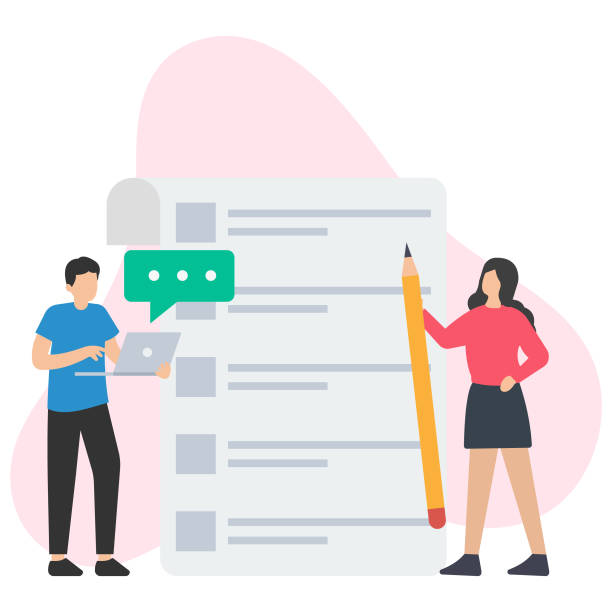Introduction to Secure Website Design and Its Importance
![]()
In today’s digital world, where a vast volume of information and transactions occur online, #Secure_Website_Design has become more important than ever.
A secure website not only protects sensitive user data but also enhances brand credibility and trust.
Cyberattacks such as data breaches, Denial-of-Service (DDoS) attacks, and phishing can cause irreparable damage.
The loss of personal, financial, and even identity information of users can lead to significant financial losses, loss of public trust, and serious legal consequences.
Cybersecurity must be considered from the very beginning of the website development process, i.e., during the design and coding phases.
This is a proactive approach that prevents incidents from occurring, rather than reacting to them after the fact.
The main goal is to create a reliable and stable online environment for all users.
In fact, website security is a shared responsibility among developers, server administrators, and even end-users.
Without sufficient attention to this vital aspect, any investment in website development can easily be put at risk.
Did you know that 94% of users’ first impression of a business is related to its website design? With professional corporate website design by **Rasavob**, turn this first impression into an opportunity for growth.
✅ Attract more customers and increase sales
✅ Build credibility and trust in the audience’s view⚡ Get a free website design consultation!
Identifying Common Web Vulnerabilities
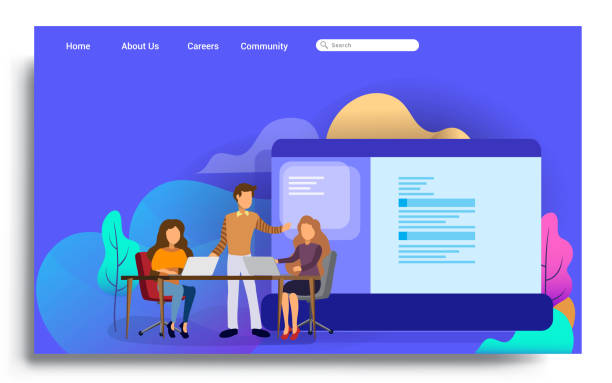
To embark on any secure website design project, a deep understanding of common web vulnerabilities is essential.
These vulnerabilities are weaknesses that attackers can exploit to gain unauthorized access, destroy data, or disrupt site functionality.
One of the most well-known and dangerous of these vulnerabilities is SQL Injection, which allows an attacker to send malicious SQL commands to the database.
This can lead to the disclosure of sensitive information or even data deletion.
Another is Cross-Site Scripting (XSS), where malicious JavaScript code is injected into the user’s browser, potentially stealing cookie information or altering the web page.
Cross-Site Request Forgery (CSRF) attacks trick users into sending unwanted requests to a site they are already logged into.
Improper session management, access control flaws, and weak server security configurations are also critical weaknesses.
Recognizing these weaknesses is the first step in #Website_Protection and helps developers write more robust code and apply more secure configurations when #Building_Secure_Sites.
Many of these attacks can be prevented by adhering to basic secure programming principles and utilizing modern frameworks.
Best Practices for Secure Coding and Database

In the process of secure website design, secure coding and database design are of vital importance.
The first step in this regard is input validation.
Any data received from the user must be carefully checked and sanitized to prevent code injection attacks such as SQL Injection and XSS.
Using Prepared Statements and parameterization in database queries is the best way to combat SQL Injection.
To prevent XSS, all user inputs must be encoded before being displayed on the page.
Also, using strong hashing (like bcrypt) to store user passwords instead of plain text is mandatory.
This approach prevents direct disclosure of passwords even in the event of a database leak.
Strict access control, ensuring that users only have access to resources they are authorized for, is very important.
This includes implementing strong authentication mechanisms and continuously checking permissions.
Furthermore, proper error handling and preventing the display of verbose error messages that could reveal sensitive information are important principles.
Below is a table of best practices for secure coding:
| Area | Best Practice | Description |
|---|---|---|
| User Input | Input validation and sanitization | Prevents injection attacks like SQL Injection and XSS. |
| Passwords | Strong hashing (bcrypt) | Avoid storing passwords as plain text in the database. |
| Session Management | Use secure tokens, set expiration times | Prevents session hijacking and CSRF attacks. |
| Access Control | Implement RBAC mechanisms | Ensure users only access authorized resources. |
Adhering to these principles is the foundation of any #Web_Security_Project and ensures that your infrastructure is resilient against common threats.
Authentication and Authorization in Secure Web Design
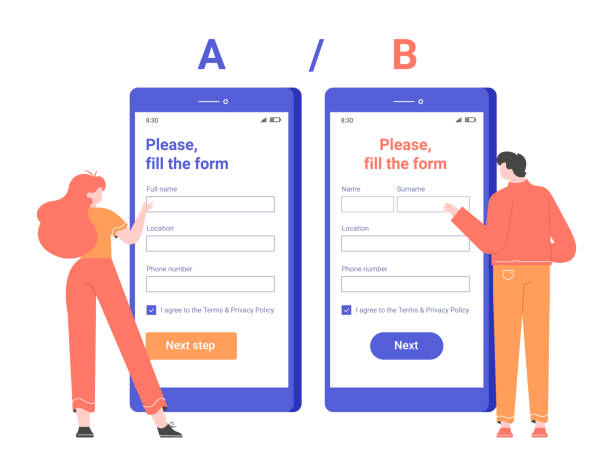
One of the main pillars of secure website design is the implementation of robust and efficient Authentication and Authorization systems.
#Authentication is the process of verifying a user’s identity; is the user truly who they claim to be? This stage involves checking usernames and passwords, or using more advanced methods like Two-Factor Authentication (2FA).
2FA is highly recommended because even if a user’s password is stolen, the attacker cannot log in without the second factor (e.g., a code sent to the phone).
Using Two-Factor Authentication adds a powerful layer to security.
After authentication, it’s time for #Authorization.
Authorization determines what resources a user can access and what operations they can perform after logging in.
For example, a regular user might be able to read posts, but only an administrator can delete them.
This mechanism should be designed based on roles (Role-Based Access Control – RBAC) or attributes (Attribute-Based Access Control – ABAC) to ensure precise and granular access management.
Every user request to the server must be checked for authorization, not just at the login moment.
Implementing secure tokens like JWT with digital signatures to maintain user session status is also a modern and secure approach.
Attention to detail in this section can strongly prevent unauthorized access and internal/external abuses, and is a crucial part of website security.
Tired of losing customers due to poor e-commerce website design? With Rasavob, solve this problem forever!
✅ Increase sales and visitor-to-customer conversion rates
✅ Smooth and engaging user experience for your customers⚡ Get a free consultation
Server and Infrastructure Security in Secure Websites
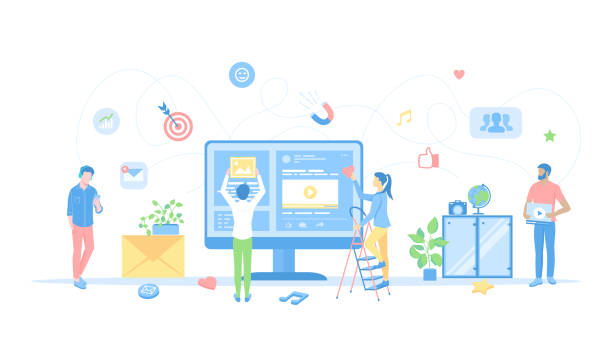
Secure website design is not limited to coding; server and infrastructure security are equally vital.
The website’s hosting server is a key target for attackers and must be meticulously configured and maintained.
First, all server software, including the operating system, web server (such as Nginx or Apache), and database, must be regularly updated.
New security patches fix known vulnerabilities, and neglecting them can open a gateway for attacks.
Firewalls play a crucial role in filtering incoming and outgoing traffic and must be properly configured to ensure only essential ports and protocols are open.
Using SSH for secure server access and disabling direct root access are other important principles.
Furthermore, a valid SSL/TLS certificate must be used to encrypt all communications between the user’s browser and the server.
This not only protects information from eavesdropping but also helps improve SEO rankings.
SSL certificates build user trust and show that the site values their security.
Additionally, regular backups of data and storing them in a secure, off-site location are essential for quick recovery in case of attacks or system failures.
Continuous monitoring of server logs to identify suspicious activities is also an integral part of #Infrastructure_Security.
By observing these points, the overall stability and security of the website will significantly increase.
Utilizing Web Application Firewall (WAF) and CDN
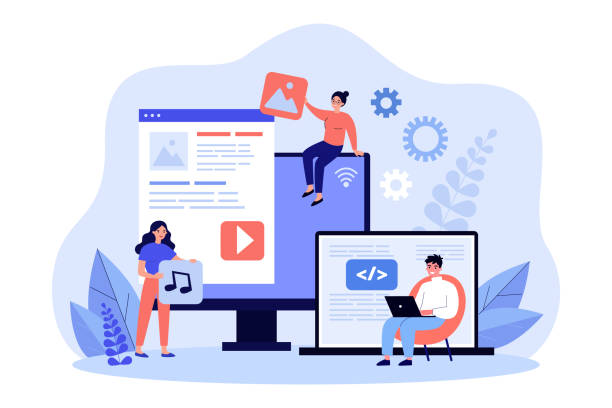
In line with secure website design, using advanced tools like Web Application Firewall (WAF) and Content Delivery Network (CDN) can add very important security layers to a website.
A WAF analyzes HTTP/S traffic and can identify and block common attacks such as SQL Injection, XSS, and CSRF before they reach the website server.
This tool acts as a shield between the internet and your website and is constantly updated with security rules to protect against new threats.
WAFs can filter malicious traffic based on signatures, behaviors, or even custom rules.
On the other hand, CDNs, in addition to improving site loading speed by caching content on servers closer to the user, play a significant role in enhancing security.
CDNs can absorb and distribute DDoS attacks.
By distributing traffic across multiple points, they prevent a specific server from being overwhelmed and the site from going offline.
Many CDNs also offer built-in security features such as WAF, bot protection, and free SSL certificates.
Integrating these two technologies not only improves website performance and speed but also provides a #Defense_in_Depth against a wide range of cyber threats.
This approach is particularly vital for high-traffic websites or those handling sensitive information, and significantly contributes to strengthening web security.
This is expert guidance that every web administrator should heed.
Regular Security Audits and Updates
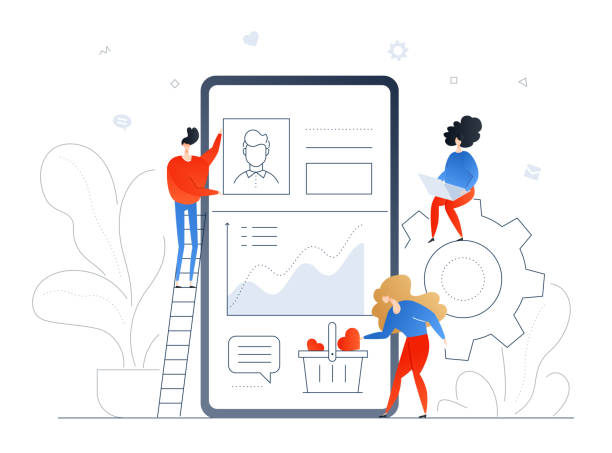
The sustainability and secure website design is an ongoing process and does not end with a one-time launch.
To maintain website security against constantly evolving threats, regular security audits and continuous updates are essential.
#Security_Audit involves a comprehensive review of code, server configuration, and database to identify potential vulnerabilities and weaknesses.
These audits can include Penetration Testing, vulnerability scanning, and Code Review.
Penetration testing allows ethical hackers to try and breach the system, discovering weaknesses before real attackers do.
Automated vulnerability scanners can quickly identify known vulnerabilities.
Furthermore, all software used, including the operating system, frameworks, libraries, plugins, and modules, must be regularly updated to the latest versions.
Many attacks occur by exploiting known vulnerabilities in outdated software.
Implementing a Patch Management program that performs these updates automatically or semi-automatically is crucial.
Additionally, you should have an Incident Response Plan ready to quickly and efficiently manage and recover the situation in case of any attack or intrusion.
This proactive and continuous approach ensures that your website security remains at a high level and is capable of resisting new threats.
| Audit/Update Type | Description | Recommended Frequency |
|---|---|---|
| Penetration Testing | Simulating real attacks to discover vulnerabilities. | Annually or after major changes |
| Vulnerability Scanning | Automated identification of known vulnerabilities. | Monthly or Quarterly |
| Code Review | Manual review of code to find security weaknesses. | During the development cycle and before deployment |
| Software Updates | Installing security patches and new versions. | As soon as patches are released |
The Role of User Education in Web Security
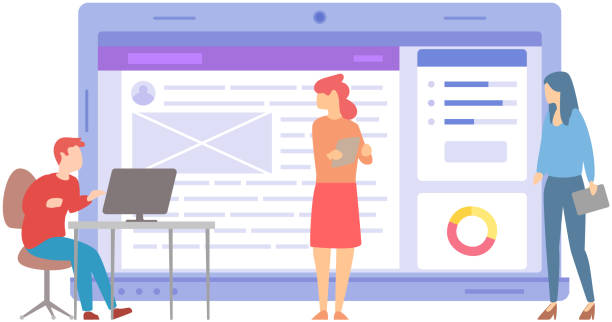
One of the often-overlooked aspects of #Secure_Website_Design is the vital role of #User_Education.
Even with the most advanced security systems, if users are not sufficiently aware, they can become a weak point for attacks.
Phishing, social engineering, and malware attacks often occur by tricking users into revealing information or clicking malicious links.
Educating users on how to identify suspicious emails, the importance of using strong and unique passwords, and the risks of sharing personal information online can significantly reduce the risk of attacks.
#Security_Awareness should become an integral part of organizational culture, even for websites designed for the general public.
Providing simple and understandable guides, displaying security warnings at appropriate times, and even gamifying security training can help engage users and increase their awareness level.
For example, explain why passwords should be complex and how an administrator will never ask for your password.
This seemingly simple approach, in fact, creates a powerful human defense layer that can stop many attacks that bypass technological weaknesses.
#Website_Security is not just a technical issue; it’s a comprehensive challenge that requires attention to all aspects, including the human factor.
#Building_Secure_Sites requires collaboration between the technical department and end-users.
Did you know that 85% of customers check your company’s website before any interaction?
With Rasavob, build a corporate website that befits your reputation.
✅ Increase customer credibility and trust
✅ Attract high-quality leads
⚡ Get a free website design consultation
Planning for Incident Response and Data Recovery
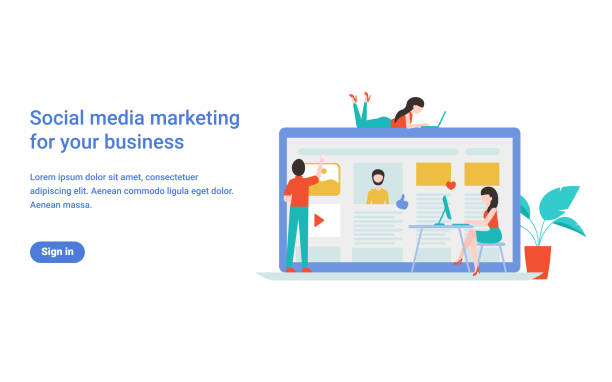
In the world of secure website design, it’s a harsh reality that no security system is 100% impenetrable.
Even with the best preventive measures, security incidents can occur.
Therefore, having a precise and well-documented #Incident_Response_Plan is of paramount importance.
This plan should include specific steps: incident identification, containment, root cause analysis and eradication, system recovery, and lessons learned from the incident to prevent its recurrence.
Rapid detection of an attack is vital; log monitoring systems and alerts should be configured to immediately report suspicious activities.
The containment phase involves disconnecting the compromised part of the website from the rest of the network or isolating the server to prevent further damage.
After containment, the security team must perform a root cause analysis to understand the origin and method of intrusion.
This step aids in #System_Recovery and prevents the recurrence of the attack.
#Regular_and_tested_backups of data and code are a critical component of the recovery plan.
In the event of a data breach, clear and honest communication with users and relevant authorities is also very important.
The ultimate goal is to minimize downtime, reduce financial and reputational damage, and quickly return to normal operation.
Having an experienced team to manage these processes can make a significant difference in the success of #Website_Security when facing challenges.
This section highlights the importance of foresight and preparation in the process of strengthening web security.
The Future of Secure Website Design and Upcoming Challenges
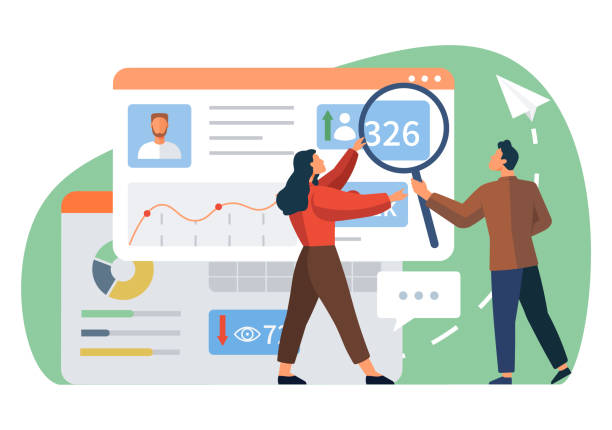
As web technology rapidly evolves, the field of secure website design also faces new and complex challenges.
The emergence of Artificial Intelligence and Machine Learning brings both opportunities and new threats.
On one hand, these technologies can aid in identifying cyberattack patterns and improving defensive systems, but on the other hand, attackers can also use them to automate and complicate their attacks.
The growth of the Internet of Things (IoT) and the proliferation of connected devices have expanded the attack surface and created new entry points for intrusion.
#API_Security has also become a major concern due to the increased use of microservices and Single Page Applications (SPAs) that rely on API communications.
Another challenge is #Zero_Day_Exploits, which exploit unknown vulnerabilities for which no security patches have been released.
#Ransomware_Attacks also remain a serious threat and can quickly encrypt data, demanding ransom payments.
In the future, the focus on user privacy and adherence to stricter regulations like GDPR (General Data Protection Regulation) and CCPA (California Consumer Privacy Act) will also gain more importance.
Secure web design requires an adaptive and dynamic approach that can counter evolving threats.
Using advanced encryption, blockchain for increased transparency and security, and fostering a security culture among all stakeholders will be future solutions.
Are we ready to face these complex challenges?
Frequently Asked Questions
| Question | Answer |
|---|---|
| What is secure website design? | Secure website design is a process where websites are built considering security principles to be resilient against cyberattacks and to protect user and business information. |
| Why is secure website design highly important? | To prevent unauthorized access to data, sensitive information leaks, malware attacks, loss of user trust, damage to business reputation, and legal consequences resulting from data breaches. |
| What are the most common website vulnerabilities? | SQL Injection, Cross-Site Scripting (XSS), Cross-Site Request Forgery (CSRF), broken authentication and session management, and sensitive data exposure. |
| How can SQL Injection attacks be prevented? | By using Prepared Statements with parameterized queries, input validation, and restricting database access. |
| What are the methods to counter XSS (Cross-Site Scripting) attacks? | User input validation, output encoding before display in HTML, and using Content Security Policy (CSP). |
| What is the role of HTTPS in website security? | HTTPS encrypts communication between the user’s browser and the website server using an SSL/TLS certificate, preventing eavesdropping, tampering, or forgery of data. |
| What are the best practices for managing user passwords? | Enforcing strong passwords (a combination of letters, numbers, and symbols), hashing passwords instead of storing them directly (with strong algorithms like bcrypt), and enabling Two-Factor Authentication (2FA). |
| What is the importance of user input validation? | Input validation prevents malicious or unexpected data from entering the system, which can lead to vulnerabilities such as SQL Injection or XSS. |
| What impact do regular security reviews and audits have on site security? | These reviews help identify vulnerabilities and security weaknesses early, allowing them to be fixed before they can be exploited. |
| What is the application of Web Application Firewall (WAF) in secure website design? | WAF acts as a protective layer between the user and the website, analyzing incoming traffic and identifying and blocking common web attacks like SQL Injection and XSS. |
And other advertising services by Rasavob Advertising Agency:
The Role of Content Marketing Ads in Attracting Manufacturer Customers
Examining the Impact of Social Advertising on Manufacturer Sales
How to Use Integrated Advertising with Social Networks for Manufacturers
The Importance of Mobile Marketing Ads in Attracting Manufacturer Customers
How to Use Data-Driven Customer Advertising for Manufacturers
And over a hundred other services in the field of internet advertising, advertising consultation, and organizational solutions
Internet Advertising | Advertising Strategy | Advertorials
🚀 With Rasavob Afarin, elevate your business to digital heights and establish a powerful online presence tailored to today’s needs with our specialized services, including corporate website design. To learn more about our comprehensive digital marketing solutions, visit Rasavob Afarin’s website.
📍 Tehran, Mirdamad Street, next to Bank Markazi, Southern Kazeroon Alley, Ramin Alley, No. 6

